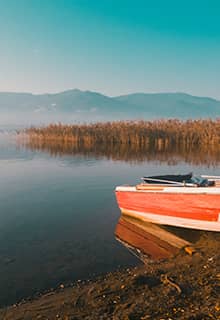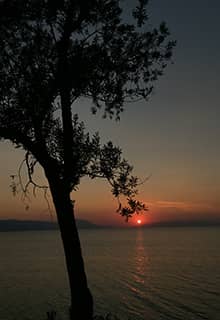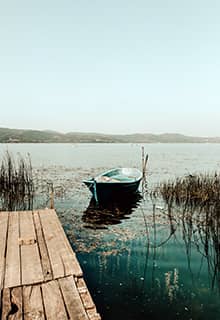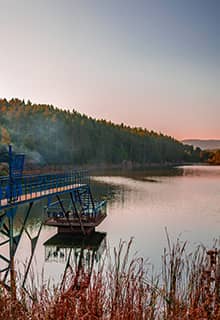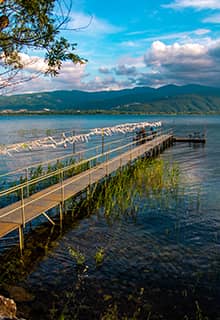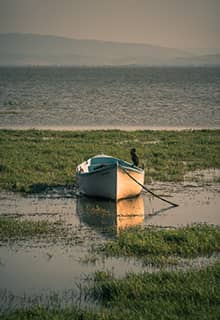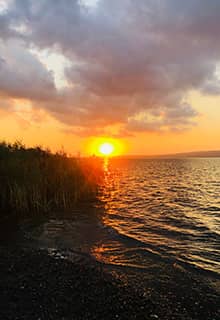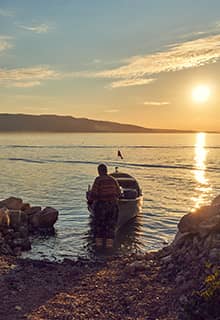

lakes Marmara
Türkiye
The Marmara Region is one of the seven geographical regions of Türkiye and is in northwestern Türkiye. It is the sixth-largest region in terms of size and is the region with the most population. The Marmara Region is a very rich in terms of streams and lakes. There are many natural and artificial lakes in the region, large and small.
Lake Sapanca
Lake Sapanca, which is the most visited point of the city of Sakarya, is a freshwater lake. Offering a beautiful natural environment, Sapanca is situated among hills covered in pines, hornbeams, and oaks. There are trout restaurants around the lake, and hotels that appeal to every expectation. There are also cafés and restaurants on the streams that feed Lake Sapanca that are popular with visitors.
The 16-kilometer-long lake spans over an area of 42 square kilometers. Although the deepest point of Sapanca Lake is 61 meters, its average depth is around 30 meters. Close to 80 bird species live in and around the lake. It is less polluted than other lakes because of its extensive catchment area.
Lake Sapanca is easily accessible due to its vicinity to urban centers. The lake offers a charming atmosphere where visitors can escape the city noise and congestion and relax in nature.
Located on the lake's high-altitude areas, Arifiye Forest offers excellent camping and picnic areas for nature lovers. If you want to spend time on the lake, you can take a short canoe ride on Sapanca lake.
Lake Sapanca is 137 km from İstanbul, 321 km from Ankara, 489 km from İzmir, 185 km from Eskisehir, 165 km from Bursa, 48 km from Kocaeli, and 25 km from Sakarya. If you are driving from İstanbul and Adapazarı, the average journey takes about two hours.
Lake Uluabat
Lake Uluabat is located approximately 35 km west of Bursa, and 5 km south of the Bursa-İzmir Highway. It is about a 3-hour drive from İstanbul.
Lake Uluabat is home to many bird species and varieties due to its location on bird migration routes. As a wetland with rich flora and fauna, it has been declared a protected area by the Ramsar Convention (in full, Ramsar Convention on Wetlands of International Importance Especially as Waterfowl Habitat). Places of interest here include the Eskikaraağaç and Gölyazı Peninsulas, the large and small islands that can be visited by boat on the lake, and the historical ruins dating back to antiquity. Following scientific studies conducted in the lake, 21 species of fish were identified. The main species that are fished for commercial purposes are northern pike and carp. Freshwater mullet, herring, and red wingfish are also fished but in small quantities.
Gölyazı, a village established on the shore of Lake Uluabat, is one of the region's most interesting and historical places. The town settlement is still inside the ancient walls, which are about 800 m long. The walls contain re-used architectural elements dating back to antiquity, while the gates and towers in still in place. In some sections, the Roman, Byzantine, and Ottoman architectural styles are intertwined. In antiquity, the settlement here was known as Apollonia. Another notable local monument is the Church of Saint Panteleimon, which was built between 1908 and 1918 to serve the needs of the Orthodox population of “Yeni Mahalle” (New Neighborhood). Following restoration, it has been serving as a cultural center since 2014.
Gölyazı awaits visitors with trees that remain in the water due to the rising waters in spring; ducks, pelicans, and storks that nest on the roofs of houses every spring; narrow, clean cobbled streets; and friendly, hospitable locals.
Lake Manyas
Lake Kuş (in Turkish Kuş Gölü, lit. “Bird Lake”) or Lake Manyas is located in the Bandırma District of Balıkesir. It is a large and shallow freshwater lake south of the Marmara Sea. It reaches a depth of four meters, but its average depth is three meters.
Willow trees, reeds, and meadows abound along the lake's shores. Lake Manyas is an important site for breeding and wintering waterbirds and the Manyas Bird Sanctuary National Park has been established here. Its dense and diverse vegetation, especially its habitats, which house hundreds of birds, attract many visitors. More than 270 bird species have been recorded here including the great white pelican (Pelecanus onocrotalus), little egret (Egretta garzetta), night heron, and tern.
The museum and observation tower located in the national park, from where you can enjoy birdwatching, are of great interest to visitors.
A Tourism Festival is held every year in the first week of June to celebrate the region's importance as a tourist destination and to draw attention to environmental pollution. Events such as panels, exhibitions, theater plays, folk dances, performances, and festival runs are held at the festival.
Lake İznik
Lake İznik, known in antiquity as Askania, is Türkiye's fifth-largest lake, and is located within the borders of Bursa Province. The lake's elevation is 85 meters above sea level, and its deepest point is 80 meters.
Lake İznik, a freshwater lake, is an attractive region with natural beauty and historical heritage. Fishing, and specifically fishing for crayfish, is allowed in the lake. The shores are surrounded by vineyards, gardens, and olive groves. On the eastern coast of the lake is the city of Nicaea, which was an important center of Christian culture between the 14th and 17th centuries.
A sunken underwater Byzantine basilica that was found here in 2014. It is something that makes the lake stand out. The lake was named one of the “Top 10 discoveries of 2014” by the Archaeological Institute of America.
There are also plenty of tea gardens and restaurants around the lake. Alternatively, you can choose to have a lovely picnic and enjoy the view of the lake.
In almost every restaurant around the lake, crayfish (also known as freshwater lobster), fish stews, and freshwater fish are on offer. Some unmissable local dishes include crayfish casserole, carp soup, catfish, grilled fish skewers, poached fish, and crayfish salad.
One of the outdoor activities recommended is to rent a canoe at sunset. If you visit as a group, you can also hire a boat tour of the lake.
Among İznik’s historical sites, two gates that are part of the walls that surround the city on all sides are not to be missed: Lefke Gate and İstanbul Gate. Lefke Gate is the gate where the city waters enter the city from the east side. It bear traces from its long past including material evidence from the Bithynian, Roman, Byzantine, Seljuk, and Ottoman periods. As the name suggests, this gate is the city's gateway to Lefke (present-day Osmaneli). The İstanbul Gate, which is the gate in the direction of the road leading to İstanbul, is the city's northern gate.
Lake Terkos (Lake Duru)
Lake Terkos, also known as Lake Duru(su), is located northwest of İstanbul on the Black Sea coast, 700 meters from the shoreline. Lake Terkos is located within the borders of the districts of Çatalca and Arnavutköy. The lake is especially popular with people who want to escape the hustle and bustle of İstanbul. The lake stands at 4.5 meters above sea level and has a maximum depth of 2 meters. It covers a surface of 39 square kilometers. The lake’s water is used to meet a significant part of the freshwater needs of İstanbul.
Other Lakes in the Marmara Region
- Lake Küçükçekmece (İstanbul)
- Lake Büyükçekmece (İstanbul)
- Lake Gala (Edirne)
- Lake Akgöl (Sakarya)
- Lake Poyrazla (Sakarya)
- Lake Sığırcı (Edirne)
- Lake Arapçiftliği (Bursa)
- Lake Dalyan (Edirne)
- Lake Tuz (Çanakkale)
- Lake Dalyan (Bursa)
- Lake Çerkeşli (Marmara)
- Lake Kulakçayırı (İstanbul)
- Lake Taşkısı (Sakarya)
- Lake Pamuklu (Edirne)

